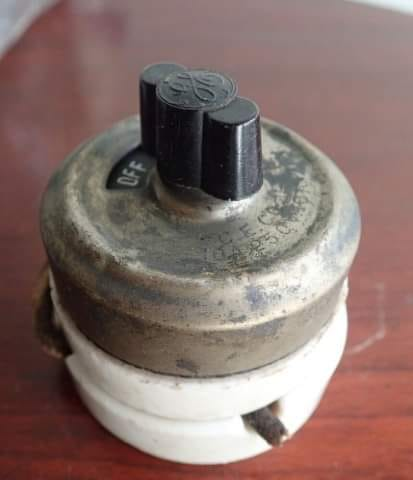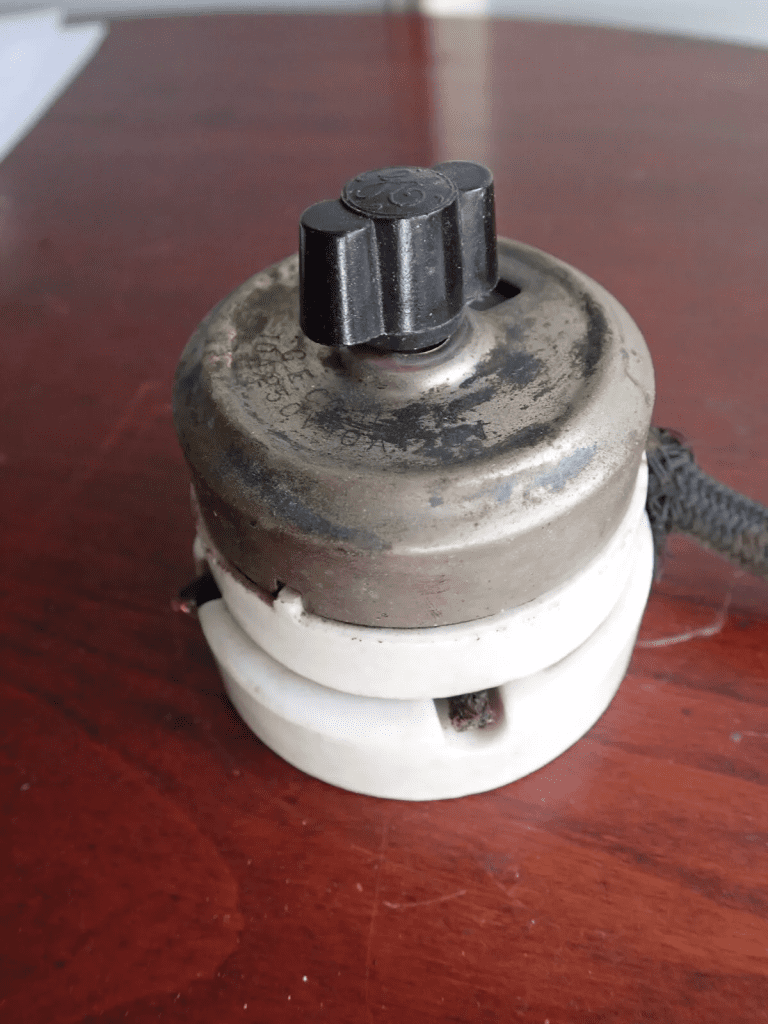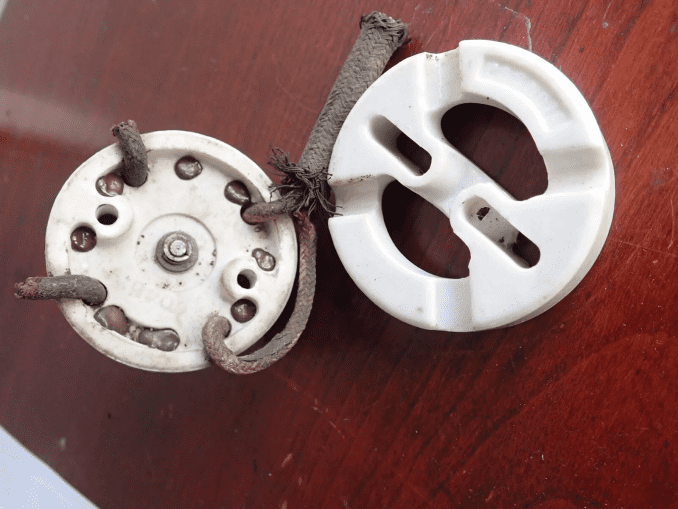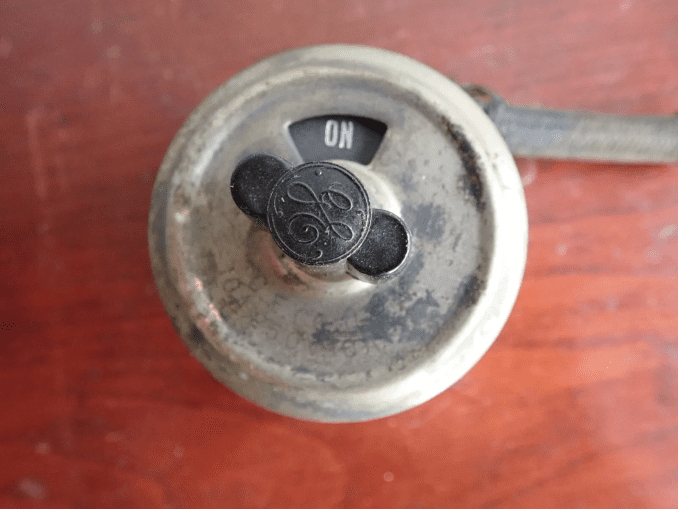In a world filled with sleek, modern light switches, vintage porcelain rotary switches hold a special place in design and history. These early light switches, crafted with precision and charm, tell the story of how electricity transformed homes. Far from being outdated relics, they remain coveted for their nostalgic appeal and enduring functionality. Let’s take a closer look at their fascinating history and timeless elegance.
The Origin of Electric Light Switches

As electricity became commonplace in homes during the late 19th and early 20th centuries, rotary switches were among the first designs used to control lighting. These switches were both practical and decorative, with porcelain emerging as the material of choice for their construction.
But why porcelain? This material offered several key advantages:
- Heat Resistance: Porcelain could withstand the heat generated by electrical currents.
- Durability: It was robust, easy to clean, and resistant to discoloration over time.
- Moisture Resistance: Porcelain performed well in varying climates, making it ideal for residential use.
While other materials like brass and wood were also used in early switch designs, wood was quickly abandoned due to its flammability, leaving porcelain as the safest and most reliable option.
The Elegance of Rotary Light Switches
Rotary light switches were beloved for their simplicity and style. A quick twist of the knob completed or broke the electrical circuit, making them easy to use. Their glossy porcelain bases often featured clean, minimalist designs that complemented early 20th-century interiors.
Though they were eventually replaced by toggle switches, rotary switches retained their charm. Today, they’re sought after as decorative pieces that evoke a sense of nostalgia while seamlessly blending with modern interiors.
The Arrival of Bakelite: A Game-Changer
By the 1920s, porcelain faced competition from Bakelite, an early form of plastic invented by Belgian chemist Leo Baekeland. Bakelite quickly gained popularity due to its affordability and impressive properties:
- High Insulation Resistance: Ideal for electrical applications.
- Heat Durability: Similar to porcelain, Bakelite handled high temperatures well.
- Cost-Effectiveness: Bakelite was cheaper to produce, making it accessible for widespread use.
Initially available in dark colors like black and brown, Bakelite became a favorite material for interior design in the 1920s and 1930s. Although Bakelite switches gradually overtook porcelain ones in popularity, both materials are now cherished as vintage treasures.
Surface-Mounted and Fitted Installations

In the early days of home electrification, wiring was surface-mounted because it was added after houses were constructed. Porcelain rotary switches were often installed externally, with visible wiring running along walls. By the 1920s and 1930s, recessed wiring became more common, leading to fitted switch installations.
Both surface-mounted and fitted vintage switches are still available today, offering flexibility for homeowners looking to incorporate retro elements. Whether in sleek black Bakelite or classic white porcelain, these switches can add character to any home.
The Appeal of Vintage Porcelain Rotary Switches

There’s a reason why porcelain rotary light switches continue to captivate designers and homeowners alike. Their timeless aesthetic and craftsmanship make them stand out in an age of mass-produced, utilitarian designs.
- Classic Beauty: The glossy finish and elegant lines of porcelain switches complement a range of interior styles, from traditional to contemporary.
- Craftsmanship: These switches were built with care, using materials and techniques designed to last.
- Historical Significance: They serve as functional artifacts of a transformative era in home technology.
- Function Meets Style: Even today, porcelain rotary switches function flawlessly, proving that good design is truly timeless.
For those restoring historic properties or creating vintage-inspired interiors, these switches provide an authentic touch that blends history with modern convenience.
Tips for Incorporating Vintage Switches in Modern Homes
Want to bring a bit of vintage charm into your home with porcelain rotary switches? Here are a few practical tips to get started:
- Pair with Updated Wiring: Ensure your home’s wiring meets current safety standards, even if the switches are vintage.
- Mix Materials Thoughtfully: Combine porcelain switches with brass fixtures or wooden accents to create a cohesive, retro-inspired look.
- Choose Surface-Mounted Styles: If you’re after an authentic vintage vibe, opt for surface-mounted switches with visible wiring.
- Consider High-Quality Reproductions: If original vintage switches are hard to find, reproductions offer the same aesthetic appeal with modern reliability.
Preserving a Piece of History

Porcelain rotary light switches are more than functional items—they’re a glimpse into the history of design and technology. Their durability, craftsmanship, and elegance speak to a time when utility and beauty were equally valued.
For homeowners and collectors alike, these switches represent a perfect marriage of form and function. Whether used as functional decor or displayed as conversation pieces, they remind us of the ingenuity and artistry of a bygone era.
Conclusion: A Legacy of Timeless Design
The journey of porcelain rotary light switches reflects the evolution of electrical innovation and interior design. From their origins as practical solutions for early electrified homes to their current status as sought-after vintage treasures, these switches have stood the test of time.
Incorporating these beautiful, functional pieces into your home not only honors their history but also adds a touch of elegance and authenticity to your space. Whether restoring a historic property or creating a vintage-inspired design, porcelain rotary switches are the perfect blend of practicality and style. So why not add a little piece of history to your home? Their charm and durability will leave you—and your guests—impressed for years to come.


